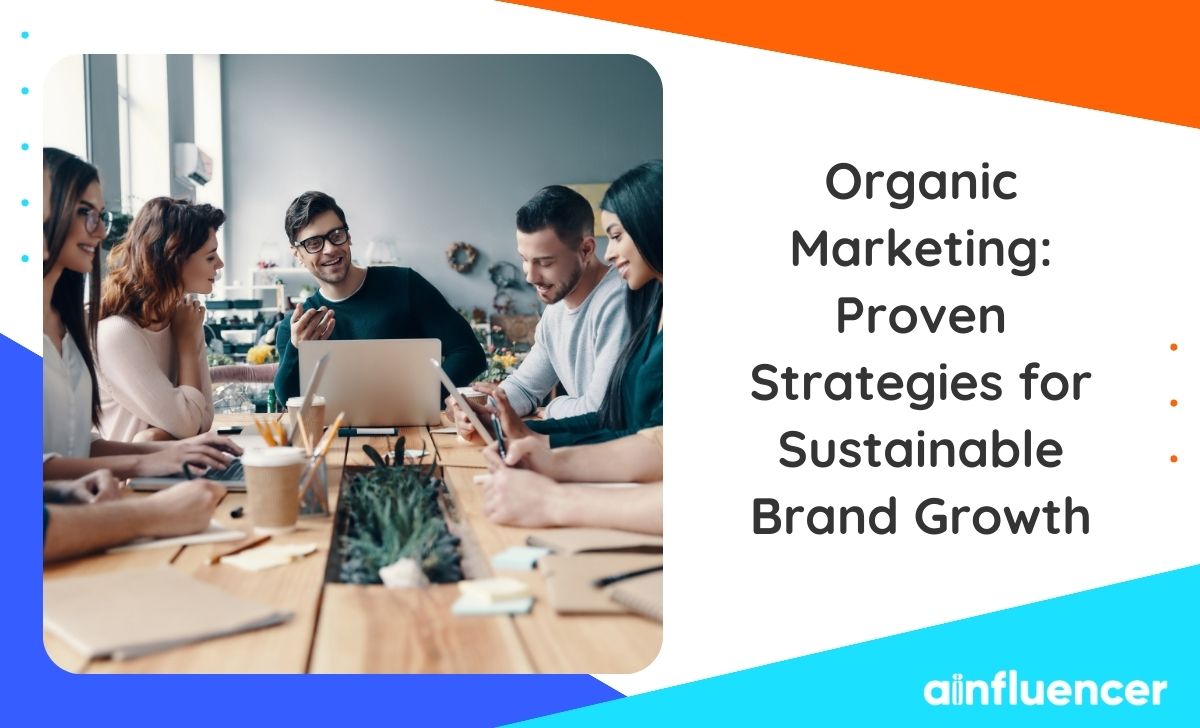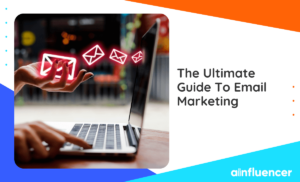You need to expand your business through organic traffic. You’ve begun a blog. You’ve set up your social media accounts. You also have a budget. Your goal is to create a marketing plan that generates a steady flow of leads, one that doesn’t dry up until you’ve spent every penny in the marketing team’s bank.
In this blog post, we’ll define organic marketing, go through five organic social media marketing strategies, and compare organic versus paid marketing.
What Is Organic Marketing
It aims to bring traffic to your brand’s website through non-paid marketing techniques. As a result, any marketing strategy that does not require you to pay for leads can be considered organic marketing.
Classic examples include search engine optimization (SEO), non-paid social media marketing, YouTube videos, podcasts, email marketing, and more.
Organic marketing focuses on providing value to the audience by solving their pain points and giving helpful, actionable information.
After finding value in your content, the audience becomes aware of your brand and hopefully becomes a lead.
Organic Social Media Marketing: Strategies to Grow Your Brand
Since organic marketing refers to any type of unpaid lead generation tactics, organic social media marketing is just that—original content you post on platforms like Instagram and TikTok and do not pay to promote.
The content’s goal is the same: to be valuable and informative, which results in brand awareness, more followers, and lead generation.
Here are five of the most effective strategies to grow your brand organically:
1) Prioritize Posting High-Quality Video Content.
Video content is easily the most consumed type of content in 2023.
According to Social Shepherd’s Video Marketing Statistics research, 82% of total internet traffic worldwide came from video content, and online videos saw a 91.8% audience reach in 2022.
An organic social media marketing strategy without video content is a ship destined for wreck before it even sets sail.
You can transform any static post into a video. You can post a mixture of time-lapses, voiceovers, instructional how-to videos, tutorials, documentary-style videos, interview snippets, and more. Free stock videos are helpful resources if you need extra help creating your video content.
2) Post Consistently on Social Media.
Social media algorithms love accounts that post consistently. But there’s a balance to be struck here. Not posting enough signals to the platforms that you’re not very active and don’t engage with your followers often. As a result, the algorithm won’t push your content into many of your followers’ feeds.
But you also don’t want to bombard your followers with 10+ posts per day.
The right amount of times to post differs with each platform and also involves some trial and error. But some of the most common benchmark goals include:
● 3 to 5 times a week on Instagram,
● 1 to 4 times a day on TikTok,
● Minimum 10 Instagram stories per day,
TikTok is straightforward: you’ll be sharing videos.
But it’s essential to post various content types on Instagram. All 3-5 feed posts shouldn’t just be photos. Include a mixture of static posts, reels, videos, and carousels. Using tools like an online Instagram story maker or an Instagram post maker will help you to create content faster.
3) Share 80% Educational Content and 20% Promotional Content.
Since you aren’t paying for promotional marketing (like ads), you’ll want to include some self-promo content on your account.
But it should never come close to outnumbering the posts that solely focus on providing value and entertaining your audience.
The 80/20 Rule rings true in the context of organic marketing. As a rule of thumb, 80% of your content should be educational — without the goal of promoting your brand, product, or service — and 20% should be promotional.
However, remember that both types of content should always include high-quality images and eye-catching copy. Otherwise, your followers will scroll right past them.
You can use tools like Freepik’s AI image generator to help with this. It creates an image based on a description you type of what you want the image to be.
You can also browse AI images by searching for a keyword. For example, I found this beautiful image when searching for “social media”:
4) Repurpose Your Content and Distribute it on Multiple Platforms
Content repurposing is a way to maximize your existing content’s reach. It entails taking the original content and expanding on specific elements or creating content with a similar theme in a different format.
For example, let’s say you explained how to set up shopping cart integrations on an eCommerce website using an Instagram carousel post where each slide is a step.
You can repurpose this content by creating a walkthrough video tutorial demonstrating the process. You can also expand on the subject by creating a post that lists the best shopping cart integration plugins.
Doing this allows you to multiply your content and fill in any possible content gaps. And once you have, take advantage of multichannel distribution by sharing your creations on multiple platforms.
5) Collaborate with Influencers and Industry Thought Leaders to Expand Your Reach
You’ve probably heard of influencer marketing before. Usually, this entails entering a paid partnership with an influencer (someone with a large social media following) to promote your product regularly.
However, you can still leverage your relationships with other content creators without engaging in paid advertising.
Reach out to creators in your industry to discuss ways you can collaborate.
Some of the most common include going on Instagram live together, filming a YouTube video or Instagram reel, posting duets on TikTok, and more.
Also Read: How To Use Instagram Reel Templates
You can also get in touch with industry thought leaders and ask to interview them, invite them on your podcast, or ask for a quote in a social media post you’re writing.
Organic Marketing vs. Paid Marketing
The most significant differences between paid and organic marketing are the cost of investment and the speed of results.
Organic marketing is almost always cheaper than paid marketing. This also means the ROI (Return on Investment) is typically higher.
However, you’ll usually see results faster from paid marketing since it uses targeted methods to advertise directly to your ideal buyers.
Conclusion
Organic marketing is a cost-effective way to generate leads, increase brand awareness, nurture long-lasting customer relationships, and increase revenue.
Compared to paid marketing, it’s a long-term strategy that takes unpredictable time to pay off. But the higher ROI, content that generates leads forever, and the base of loyal, trusting followers make it a no-brainer investment for modern marketers.
And with these tips, you have all the tools in your arsenal to see exponential organic growth.

![Read more about the article Shopify Plus: [Pricing, Features & Benefits in 2024]](https://blog.ainfluencer.com/wp-content/uploads/2024/02/shopify-plus-featured-300x182.jpg)
![Read more about the article What Is Walmart Creator Program: [The Comprehensive Break-down + Best Alternative in 2024]](https://blog.ainfluencer.com/wp-content/uploads/2023/12/Copy-of-Ainfluencer_Content_Images-12-1-300x182.jpg)


![Read more about the article The Growth of Affiliate Marketing [2024 Update]](https://blog.ainfluencer.com/wp-content/uploads/2024/05/The-Growth-of-Affiliate-Marketing-2024-Update-300x182.jpg)



![Read more about the article How to Use ChatGPT to Make Money? [The Full Guide in 2024]](https://blog.ainfluencer.com/wp-content/uploads/2024/04/jpeg-optimizer_How-to-Use-ChatGPT-to-Make-Money-300x182.jpg)